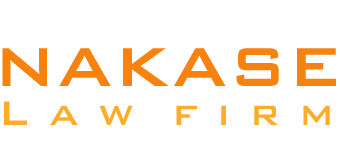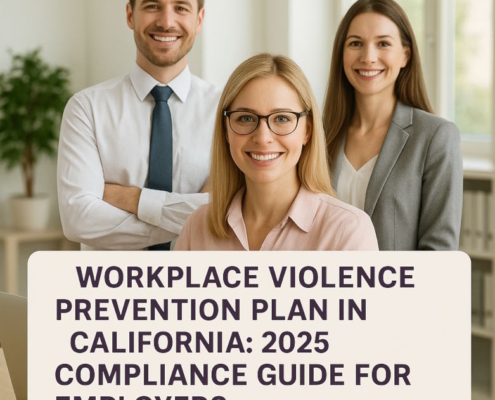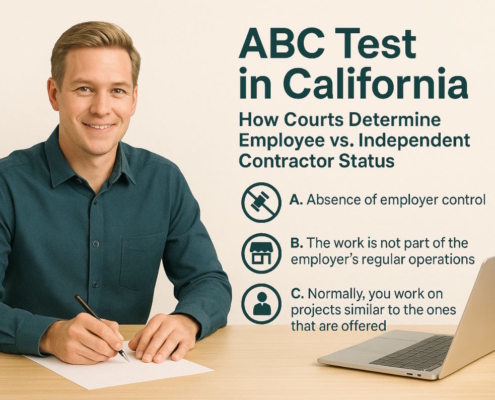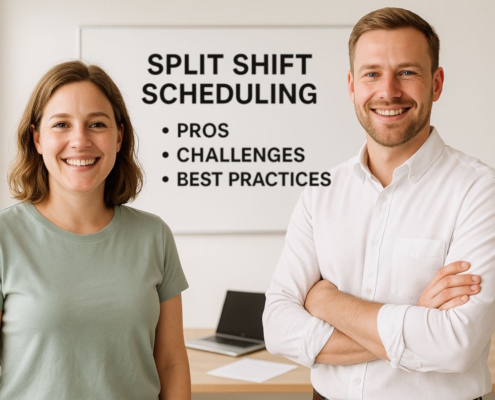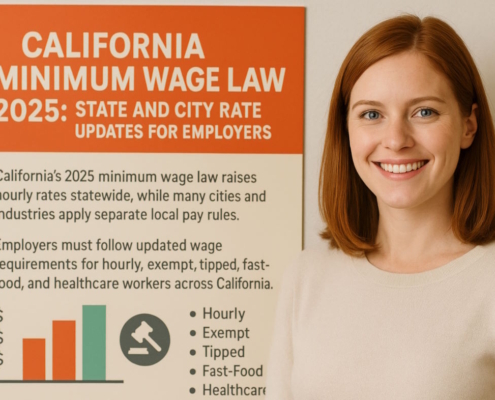What is strategic workforce planning?
HR and company leaders can identify and predict their employee needs and issues with the help of strategic workforce planning. This enables them to take proactive measures that guarantee the organization’s readiness for success now and down the road.
In this article, we’ll go over the definition of strategic workforce planning, how it can help your company, and which framework and tools are best for you to use when you first start planning your staff.
A rigorous people strategy and ongoing workforce gap analysis are the two main components of strategic workforce planning (SWP). This is the process of ensuring that a company has the people, knowledge, and skills necessary to satisfy present and future company objectives. It considers unforeseen circumstances and developments and is grounded in the organization’s long-term plan.
Strategic workforce planning seeks to minimize the danger of understaffing and maximize costs by guarding against overstaffing. It guarantees that the company can consistently meet its goals. HR leads it, but company and HR executives run it.
Strategic workforce planning aims to produce a workforce that is the proper shape, size, agility, and cost.
The number of employees and their job roles are the main size concerns. An overly large workforce is overworked and ineffective. On the other hand, a tiny workforce indicates that the business isn’t producing as much as it could. A surplus of open positions may serve as a reliable marker for this.
Form aims to have the proper workforce composition with the competencies required both now and in the future. It incorporates succession planning as well.
Finding the ideal labor cost is the aim of cost. Overspending on labor might bankrupt the business, but underspending can leave workers unable to finish the job.
Agility aims to have an employee base that is lean, adaptable, and able to adjust to shifting market demands.
A few writers explain the “Seven Rs” of strategic workforce planning as follows:
- Right people
- Right shape
- Right skills
- Right time
- Right size
- Right cost
- Right place
The following is an expanded version of the Seven Rs of strategic workforce planning:
- Right size
- Right shape
- Right location
- Right cost
- Right time
- Right risk
- Right capability
Advantages of strategic workforce planning
Putting a strategic personnel planning model into practice in your company has numerous advantages. Below, let’s examine a few of the main benefits.
- Managing demographic shifts: An aging labor population presents several issues, such as a shortage of skills in demand, difficulties in reskilling, and a high retirement rate. To prepare for this future problem and prevent a skills gap, firms might benefit from strategic workforce planning.
- Cost savings: By helping you recruit the proper number of workers with the necessary abilities at any given moment, strategic workforce planning helps you reduce the expenses associated with attrition and overstaffing.
- Talent management that works: Employing and keeping people with the proper abilities, attitudes, and drive while building a talent pipeline to take the position of an organization’s aging executives and upper management gives you a competitive edge in the labor market.
- Future-ready: Companies can prepare for an unclear future full of anticipated and unforeseen obstacles by preparing in advance for changes. They can also better manage unforeseen events like market disruptions or quick technological breakthroughs by identifying important roles and talents and having a strategy to keep these positions filled.
- Flexibility: Businesses need to be more flexible in how they handle hiring employees considering today’s fierce competition and quickly advancing technologies. Organizations can benefit from this flexibility through proactive capacity building and resource allocation to high-priority areas through strategic workforce planning.
- Risk reduction: Strategic workforce planning helps you reduce the risks related to overstaffing and insufficient staffing, budgets, retiring employees, gaps in skills, and more because it adopts a more comprehensive approach and considers both present and future demands.
- Coordinating staff tactics with company objectives: Aligning personnel initiatives with more significant company goals can be facilitated by considering the trajectory of the business over the next 3-5 years. Thanks to this foresight, your company may create a staff that is tactically ready to sustain future business strategies and goals.
Framework for strategic workforce planning
Taking a systematic and rigorous approach is critical while creating your strategic workforce planning strategy. You may better understand how strategic workforce planning aligns with your business plan and steer this process by using a strategic workforce planning framework.
The framework demonstrates how organizational strategy, for instance, and other business goals align with strategic workforce planning initiatives. Company strategy (step 2) informs strategic workforce planning, which is not the initial step. Step 1 involves several aspects, such as market developments, the company’s offerings, and rival actions, which influence the organizational strategy.
Business leaders can decide where they want the company to go over a period of 3-5 years and beyond by following steps 1 and 2. The third step assists firms in assessing their current situation, including the caliber and size of their personnel. HR develops a plan in step 4, the last phase, using the information gathered in phases 1 through 3.
Three core elements serve as the foundation for the strategic workforce planning framework:
- The organization’s strategy is in harmony with strategic workforce planning. The company’s goals for the next five to 10 years are outlined in the company strategy, which is a long-term plan. This is a great rule of thumb for staff planning.
- Effective labor planning adheres to the Pareto principle of 80/20. Just twenty percent of the work results in 80% of the desired end. Strategic personnel planning should center on the company’s primary responsibilities, sometimes known as vital roles. These positions have the biggest impact on the organization’s outcomes.
- Workforce planning has a long-term orientation since it concentrates on strategic and tactical choices.
Models of strategic workforce planning
Let’s take a quick look at a few more prominent forms of strategic workforce planning.
The model of HCI
The HCI model instructs businesses to adhere to a tried-and-true structure customized to meet their requirements. This approach is predicated on eight essential steps, namely:
- Defining the business plan
- Dividing up the roles
- Performing a survey of the environment
- Examining the situation as it stands
- Building a comprehensive future
- Finding the gaps
- Formulating a plan of action
- Observation and documentation
Workforce Planning Model of OPM
The five-step OPM workforce planning model is a helpful place to start when grasping the components of workforce planning.
The following are the 5 steps:
Step 1: Determine the strategic course
Step 2: Perform a workforce study, find skill gaps, and analyze the workforce
Step 3: Create a plan of action
Step 4: Put the action plan into practice
Step 5: Keep track of, assess, and edit
Case Study
PwC worked with a customer with unclear workforce supply and demand information, disparate teams using separate tools and spreadsheets, and shaky data from multiple sources. The goal was to create and implement an innovative human resources strategy that covered all facets of the employee journey.
PwC created and used strategic workforce planning values throughout the company to do this, serving as guiding principles for stakeholders. The organization has developed a unique SWP modeling system to combine and unify the many data sources.
By introducing an SWP framework for decision-making, the team enabled executives to make fact-based choices about hiring, developing personnel, and restructuring.
Process for strategic workforce planning
Workforce planning consists of these three essential steps:
- An examination of the labor force as of right now
- A scenario-based approach to envisioning the future
- A review of the future labor force.
Let’s talk about these in greater depth.
- Examine how the staff is currently organized
Workforce planning addresses the issue of what personnel and expertise a company has by beginning with the current workforce formation.
When assessing the existing composition of the staff, two factors need to be considered: the quantity and quality of the staff.
1.1 Workforce caliber
Both present performance and future potential determine the quality of the labor force. People who perform exceptionally well now or are anticipated to perform exceptionally well in the future are considered high performers and employees with significant potential.
Evaluating the caliber of the present workforce establishes the foundation for efficient talent management, which involves fully utilizing your people. Companies spend money and time to help their employees realize corporate goals and perform at their highest levels to do this.
Evaluating the quality of the workforce is the first stage in analyzing the current labor structure. Employee performance is evaluated both now and in the future. The 9-box grid structure, which aids in workforce mapping and allows HR to manage talent efficiently, is an excellent illustration of this.
The strategic workforce planner’s job description includes forecasting future conditions, which involves taking market trends and developing skills into account.
Performance and potential now do not translate into performance and potential in the future, for instance, if a business wants to increase its machine learning skills. It is far more challenging to map worker potential against a divergent path.
Talent management policies must vary depending on the category of people.
- High potentials require guidance and instruction.
- High-potential supervisors require training in management.
- Raising or promoting high performers with low potential is not a good idea because they have little room to grow. The organization would become top-heavy if this were done. Furthermore, because they are paid so well, they do not need to quit performing.
- Raising or promoting low achievers with low potential is not a good idea. You should cut ties with these individuals because they’ll probably be happier working somewhere else.
This kind of straightforward workforce planning exercise can help organize a sophisticated procedure like talent management.
- Look ahead: Use scenario analysis to map out possible futures.
Knowing where you are with your workers right now is beneficial. However, in order to be prepared for the future, you must think ahead and develop several strategies that your company can implement depending on the situation.
Netflix is one of the best illustrations of this. They were the primary competitor to Blockbuster, having started off as a movie rental business in 1998. Customers who signed up for Netflix had access to an endless supply of movies, which would be mailed to their homes and subsequently returned.
The creators got the idea of streaming fairly early on and apparently looked into establishing it sooner than they actually started with it, anticipating a change to a wholly digital experience. But it wasn’t technically possible at the time due to the slow internet speeds.
However, Netflix eventually debuted its streaming service in the United States in 2007 and then steadily expanded to other nations. After beginning to create original material, it went on to become the first streaming success story. In the meantime, Blockbuster regrettably closed due to its inability to foresee the future and adapt.
If technology hadn’t advanced, Netflix might have still started creating original content but would have stuck with its DVD rental business and delayed its streaming aspirations.
- Examine how the workforce will evolve in the future.
Analyzing how the workforce will look down the road is the final step. The intended formation and the expected formation are different.
3.1 Anticipated future formation
The company is anticipated to form in 3-5 years if its current course of action is maintained. In this case, the personnel flow matrix that we previously displayed is useful since it allows us to generalize these figures over a longer time frame. The matter at hand pertains to whether the anticipated future formation aligns with the intended formation.
3.2 The intended future formation
The transportation industry illustrates an anticipated future formation. According to a recent report by the International Transport Forum, by 2030, there will be a 50–70% decrease in the demand for drivers in Europe and the US.
Since trains can now drive themselves, the train operator’s job has become more of a backup plan in case of an emergency. It is possible that the operator won’t be needed in a few years.
The workforce faces difficulties because of these developments. In two to three years, your personnel of train operators will still be important, according to the predicted formation.
By then, though, their work will be mechanized, so your ideal formation would be somewhat different.
You can close this gap by recognizing it. Eliminating these employment opportunities will take a long time in nations with labor unions. However, being ahead of the curve with strategic workforce planning will help you anticipate these obstacles and respond appropriately when needed.
Tools for strategic workforce planning
Here are a few popular SWP tools, along with instructions on using them.
Nine-box grid
Employee performance and potential can be mapped out in one location with the aid of the 9-box grid, also called a performance-potential matrix. Workers are divided into several groups, such as “talent risk” and “consistent stars.” These groups are determined by how well or poorly they perform and how much potential they have within the organization.
From here, you may decide who gets promoted, quits, and stays in your company.
Dashboarding for HR
The HR dashboard is an additional tactical tool for workforce planning. Usually, it displays data from multiple sources, such as your ATS, payroll, and other HRISs. You can compute, examine, and report on HR measures using this total data. The aim is to create a unified picture of your workforce’s current situation, which will assist you in making future decisions.
Analysis of Pay and Benefits
Data on pay and benefits is accurate, well-organized, and closely tied to financial performance. Because of this, an examination of this can be instructive.
Establish an internal pay baseline and classify employees as overpaid or underpaid in order to do a basic study. Employees might be categorized as overperforming or underperforming based on performance statistics.
It is ideal for your underperformers to be paid less than your overperformers and vice versa. If this isn’t the case, you risk keeping your worst performers while losing your best ones.
Planning scenarios
By visualizing several future scenarios, scenario planning helps you avoid surprises and ensures you are equipped to handle a range of circumstances.
This strategy entails speculating on various (unexpected) futures that could significantly affect the company. Technology advancements, changes in the law, shifts in the economy, natural calamities, and other reasons could be to blame.
The next stage is to outline each scenario’s potential effects on the company and develop a plan of action for handling such an occurrence.
Best practices for strategic workforce planning
After learning about strategic workforce planning, its advantages for your company, and the models and tools that can help you along the way, here are some recommended practices to remember.
- Determine the important parties for you: Who are the employees you need to work with, convince, or persuade to support and implement your workforce plans? Stakeholders frequently include finance, IT, operational leaders, HR business partners, and, if relevant, unions.
- Keep a skills inventory: HR managers and other leaders can better grasp the variety of backgrounds, abilities, and certifications held by their workforce members by using a skills inventory. This is useful for performing a skills gaps analysis, which may subsequently help your firm prepare for the future in the areas of workforce planning, learning and development, and recruitment.
- Apply analytics and data: Less than 50% of companies use data to detect gaps in skills among their staff, and only 13% track the return on investment (ROI) of their hiring efforts, according to a survey by the CIPD and Omni. You may get a competitive edge, make better decisions, and plan ahead more efficiently by using data analytics to estimate your future labor demands based on trends, company growth, and other factors.
- Identify your crucial roles: Which positions inside your company are the most important and will add the greatest value to your company going forward? You can ascertain whether other individuals in the company can be trained for these roles and how easy or difficult it may be to hire external candidates by thoroughly analyzing these roles and the abilities, experience, knowledge, qualities, and credentials that make individuals successful in them.
- Think about external workforce trends: You may better predict your future staffing needs by monitoring developing external personnel trends, such as shifts in the labor markets, the emergence of new skill sets, and shifts in demographics. Maintaining a future-focused mindset can be achieved through reading blogs and online journals, reading newsletters, and connecting with other industry professionals.
- Create a talent pipeline: This will provide you access to a pool of pre-screened applicants for future positions that become available as needed. You should be consistently seeking out, interacting with, and nurturing applicants who have the ideal blend of abilities, dispositions, and organizational potential if you want to guarantee that you always have a robust pipeline. To find and develop talent, you could, for instance, collaborate with pertinent educational establishments and design internal development initiatives.
- Consider agile workforce planning: This method is intended to be a continual workforce planning process as opposed to a one-time HR endeavor. Put differently, manpower planning turns into a cycle that involves reviewing corporate objectives and strategy, conducting gap analyses, implementing the workforce plan, and tracking and fine-tuning its results. This strategy works well for larger companies with leaders, stakeholders, and an established HR department who have the means to plan their staff continuously.
Effective HR management strategies are crucial for aligning workforce capabilities with long-term business goals.
In conclusion
By using strategic workforce planning, companies can ensure that the best people are working in the proper positions at the right time now and in the future. You can successfully develop and sustain a strong competitive edge by knowing the advantages and disadvantages of your present workforce capabilities, the company’s long-term goals, and possible future developments.
